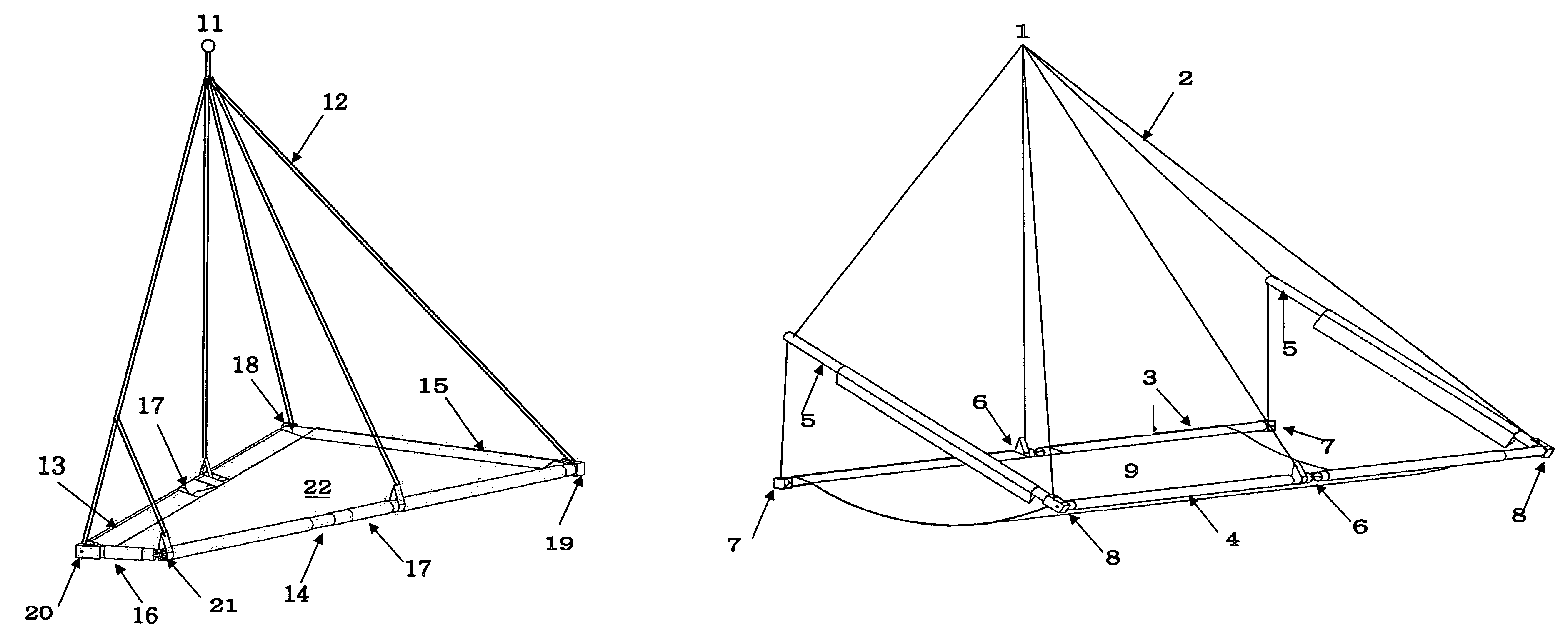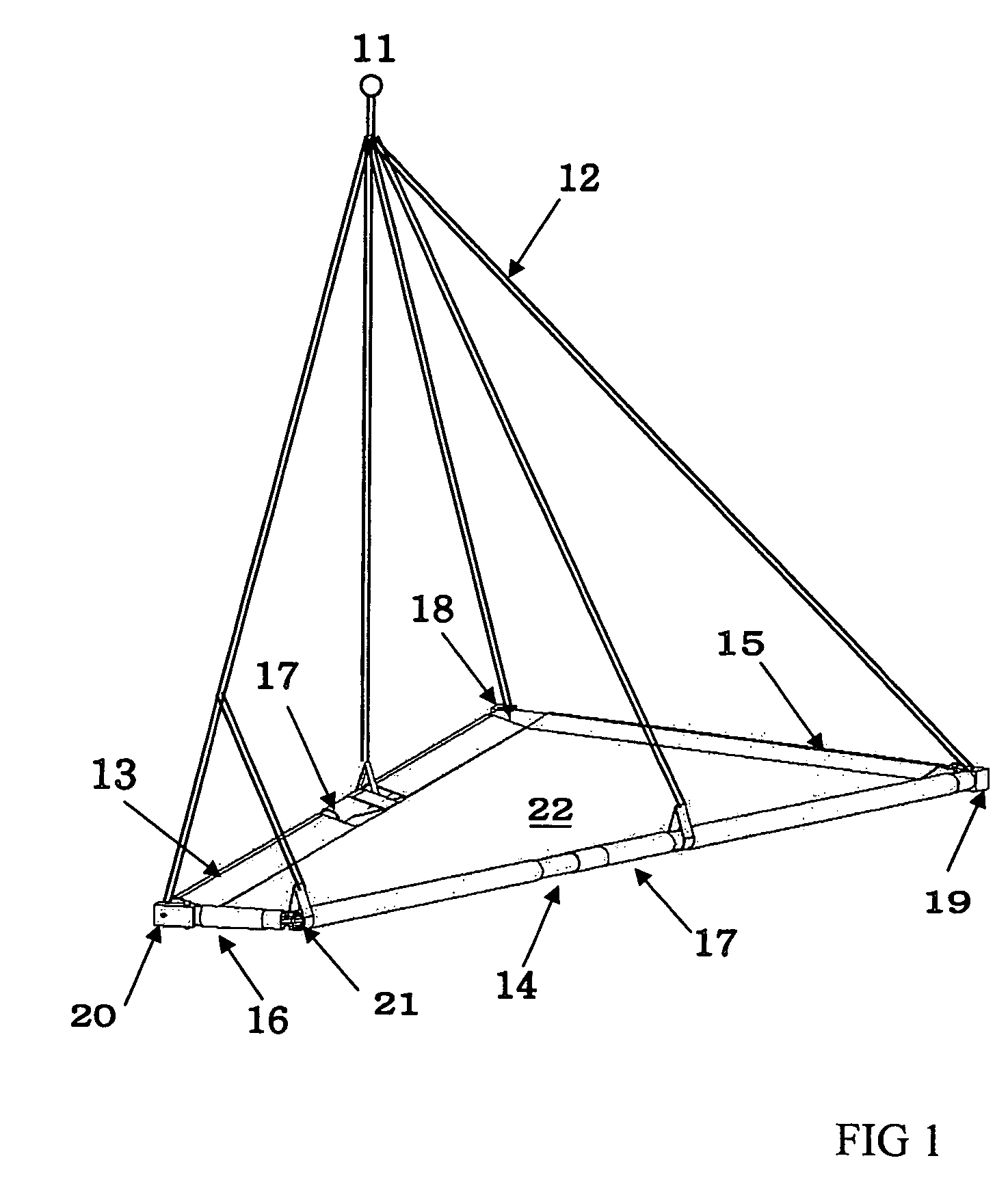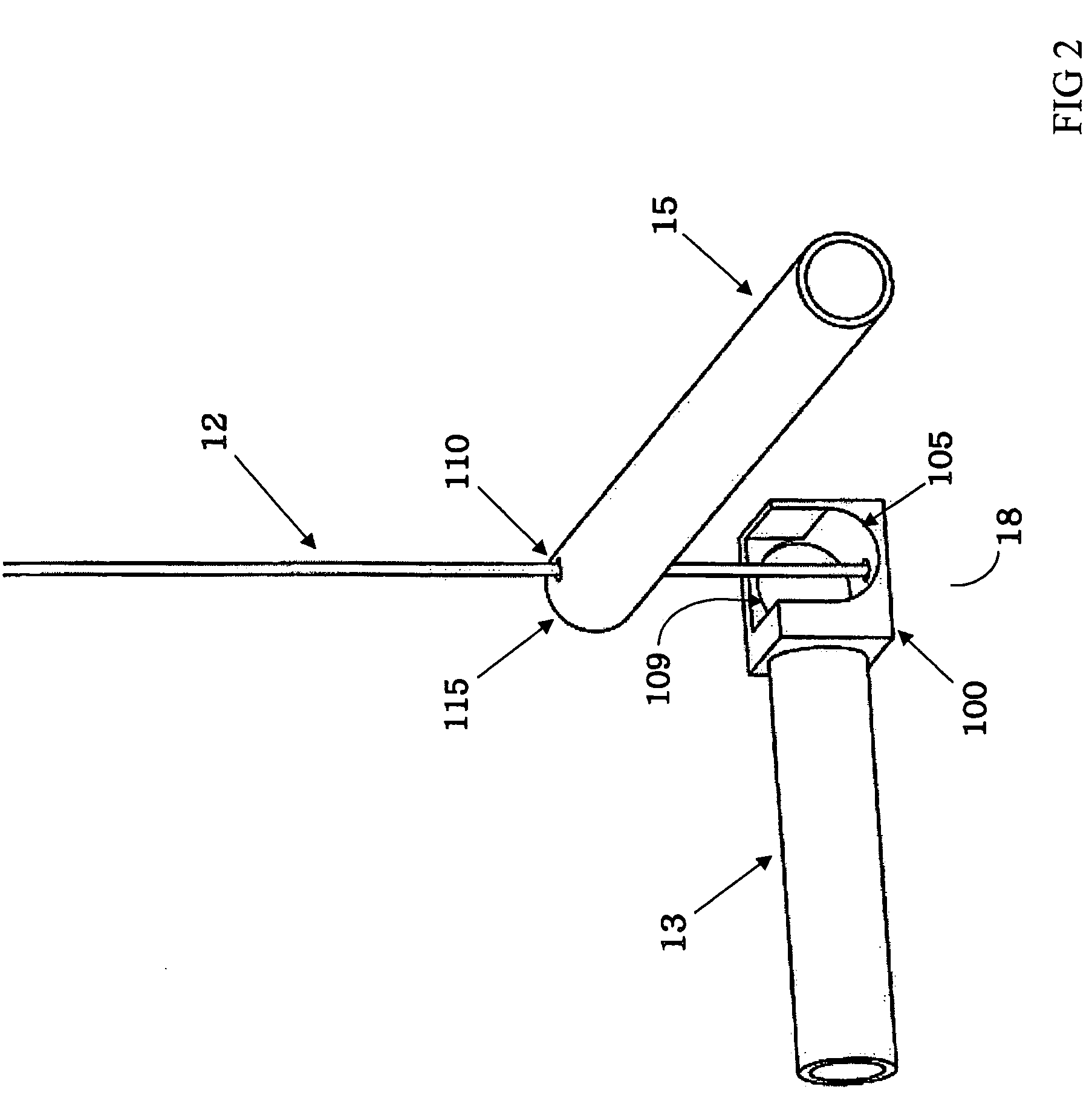Portable hanging cot
a portable, climbing technology, applied in the direction of travel accessories, beds, beds, etc., can solve the problems of substantial risk to climbers, prior art ledges can be difficult to both assemble and dismantle, and the difficulty of dismantling the ledge can be as difficult, so as to achieve convenient and quick assembly and dismantling, and greater functional living space for users. the effect of safety
- Summary
- Abstract
- Description
- Claims
- Application Information
AI Technical Summary
Benefits of technology
Problems solved by technology
Method used
Image
Examples
Embodiment Construction
[0030]A first preferred embodiment of the present invention is shown generally in FIG. 1 comprising a trapezoidal framework formed by a collapsible set of linking tubular members, with cabling for suspending the framework from an elevated central apex such as a hook. A bed surface formed of strong yet flexible woven material or suitable high strength / low weight cloth connects to the collapsible frame using stitched loops that receive the tubular members to form the living space of the cot. The bed surface can be secured to the frame in a preferred embodiment such that the combination is stored together and the bed surface is not separated while being carried, so that when the frame is assembled the bed surface is already in place for the climber to use. Because the bed surface is sized for the expanded framework, there is no need to perform tightening of the bed surface after the cot is unfolded—a major timesaver not found in prior art systems. The frame is formed with a combination...
PUM
 Login to View More
Login to View More Abstract
Description
Claims
Application Information
 Login to View More
Login to View More - R&D
- Intellectual Property
- Life Sciences
- Materials
- Tech Scout
- Unparalleled Data Quality
- Higher Quality Content
- 60% Fewer Hallucinations
Browse by: Latest US Patents, China's latest patents, Technical Efficacy Thesaurus, Application Domain, Technology Topic, Popular Technical Reports.
© 2025 PatSnap. All rights reserved.Legal|Privacy policy|Modern Slavery Act Transparency Statement|Sitemap|About US| Contact US: help@patsnap.com



